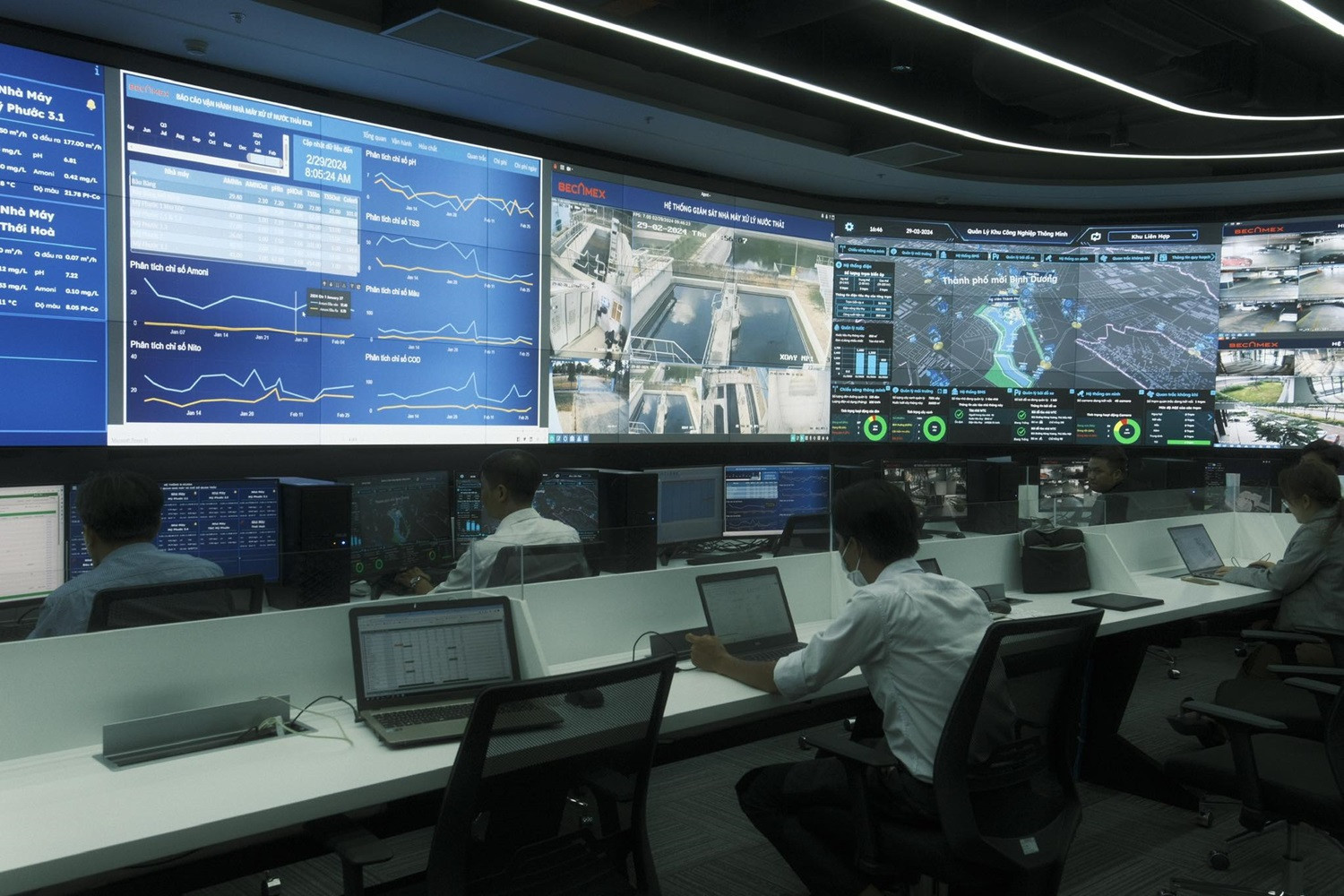
The green growth plan in 2023-2030 mentions the creation of favorable conditions to develop new green production fields. Could you please tell us about Binh Duong’s plan to greenize its industries?
Some choosy markets, especially Europe and the US, require green standards on imports, so shifting to green production is a must for Vietnamese enterprises. Foreign partners tend to choose suppliers that can satisfy their requirements - for example, using renewably energy and having wastewater treatment systems meeting environmental standards. In general, foreign investors are becoming choosier about their destinations.
Binh Duong is gathering strength to develop green infrastructure in Industrial Zones (IZ). VSIP 3, for example, which covers an area of 1,000 hectares, is designed to integrate smart technologies in its operations, including use of energy and water, waste treatment and traffic and security management.
The IZ will prioritize hi-tech industries, green economy development and pollution mitigation and will give priority to non-labor-intensive projects.
When the IZ project kicked off, VSIP 3 received a lot of ‘eagles’ (large foreign investors). Danish company LEGO chose VSIP 3 to build its $1.3 billion factory. This is the first carbon neutralized factory of the group.
Besides VSIP 3, other IZs including Cay Truong and expanded Bau Bang, developed by Becamex IDC, are also following the green tendency. As greenization is growing all over the globe, it will be impossible to attract new investors if we cannot satisfy green requirements. We need ‘green nests’ to receive ‘eagles’. IZs need to get ready with green infrastructure and digital infrastructure to welcome big investors.
In other words, we need to be ready and have standardized infrastructure for wastewater treatment, solar power, greenery, and smoke and dust treatment before inviting investors to set up production bases.
Have you mentioned the use of renewables in IZs?
Yes. IZs will prioritize rooftop solar power, and biomass and electricity generating during the waste treatment process. The provincial authorities are negotiating with suppliers on prioritizing providing renewable power to IZs to satisfy green production requirements.
Sembcorp (Singapore) and Becamex VSIP have set up a power company specializing in electricity distribution, including solar power to factories, so that factories have certificates on using renewables in production.
How about other preparations, in addition to green infrastructure?
Binh Duong is considering attracting experts to give consultancy and support domestic enterprises in providing carbon credits.
In fact, enterprises’ knowledge about carbon credits remains unclear. In order to obtain the certificates, they need to understand standards and regulations in green production. Experts will give guidance to enterprises so that they can set up standardized production lines and obtain certificates.
When talking about green production, you mention VSIP 3. Does the IZ apply all new standards?
VSIP 3 is considered the country’s leading ecological IZ, which is following a path towards digitization and net-zero emissions.
The IZ has a smart operation center that operates the entire IZ. There is a solar power supply system through the rooftop solar power systems of some factories. The IZ built a power storage system which ensures stable electricity supply, daytime and at night. There in the IZ, everything is digitized.
In the first phase of development, 200 hectares in the IZs are nearly fully occupied. The investor is following procedures to continue to develop the IZ in the next phases.
How about the existing IZs in Binh Duong?
There are many IZs in Binh Duong. It is easy to greenize new IZs. As for old IZs, it will be more difficult, but going green is a must, and this must be carried out step by step.
In the time to come, when some land plots' leasing time expires, the province will change the purposes of land use and manufacturers can move to new IZs. That is why Binh Duong is developing green infrastructure in IZs to help enterprises move their production facilities. This is also a solution that helps to retain existing enterprises and attract new investors.
Tam An - Xuan An